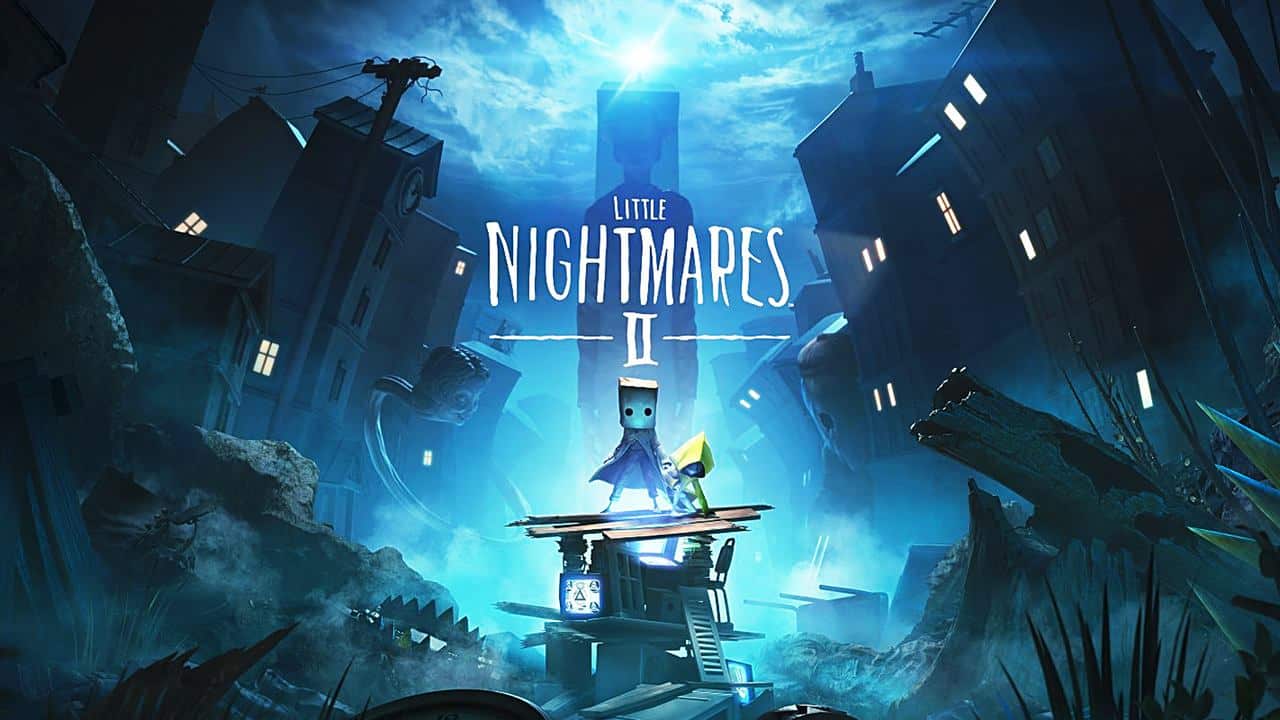
The first Little Nightmares left me uneasy. I couldn’t stop thinking about the strange world or the way it told its story without words. I didn’t get everything, but the imagery and helplessness stuck with me. Coming back for Little Nightmares II felt like the right move.
This time, you play as a new character named Mono. The world feels wider, the areas more varied, and there’s more going on between each close call. Six returns too, and how she moves or hesitates adds another layer to everything. It’s not just about escaping anymore. It feels like you’re both trying to hold onto something as things fall apart.
The first game made you feel small. This one makes everything else feel bigger, heavier, and harder to deal with.
Waking Into Something Worse
The story kicks off with Mono, a quiet kid wearing a paper bag over his head, waking up in a forest. Nothing feels right from the start. As you keep moving, the world gets stranger. You pass through empty classrooms, run-down hospitals, and city streets buzzing with static. Not long after, Six shows up. She stays close and helps with puzzles, adding a bit of comfort as everything around you keeps falling apart.
The story doesn’t explain much. You piece things together by noticing what’s in the background or watching how Six reacts. There are no words, no tutorials, and nothing that clearly tells you what’s going on. That silence works. It keeps you alert and curious, especially when the Signal Tower starts to come into focus. Whatever it’s doing, it’s twisting the world into something unnatural.
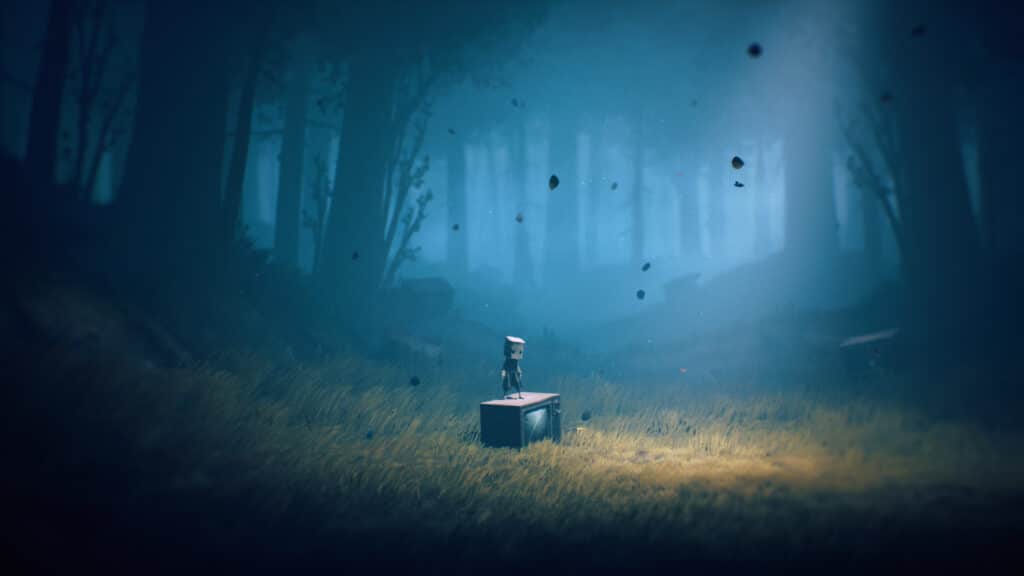
Each chapter introduces a new threat, bigger, more disturbing, and harder to escape. Some moments are subtle, like hearing footsteps overhead. Others are more direct, like sprinting through a hallway with a monster just behind you. The enemies don’t just chase you. They feel like they’re part of the setting, warped into it, which gives everything a cold, dreamlike feel.
The ending really threw me. I had a rough idea of what might happen, but when it hit, I just sat there for a bit. No dialogue, no explanation, but it stuck with me anyway.
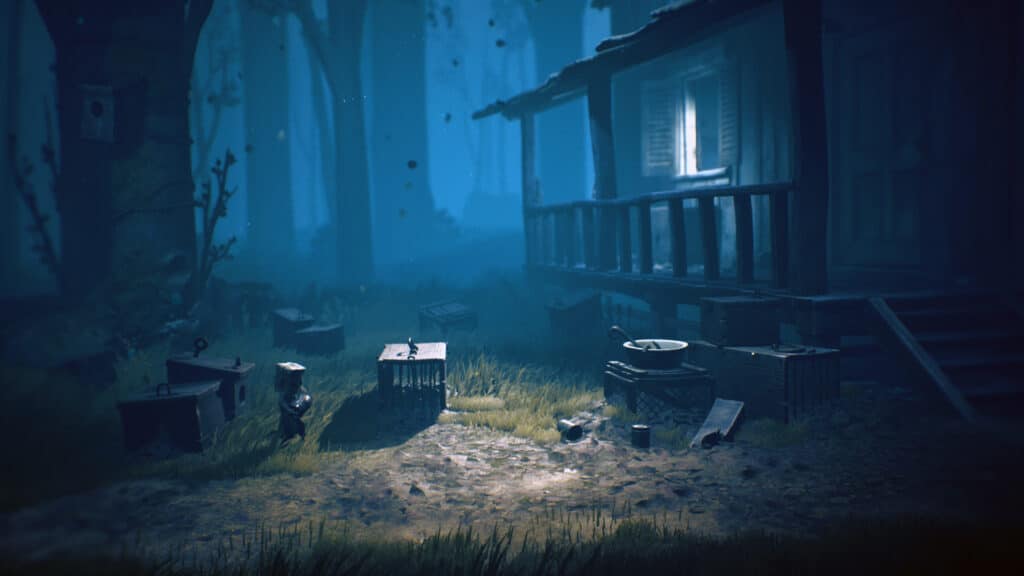
Sneaking, Solving, Surviving
The basics haven’t changed much. You sneak around, solve simple puzzles, and try to stay out of trouble. Timing still matters, especially when you’re one step away from getting caught. Things feel a bit more varied this time. Mono can grab objects, swing makeshift weapons, and team up with Six to reach new spots. You even get a few moments to fight back, though they’re rare.
Combat is rare, but the game leans into it just enough to change the pace. When it works, it’s intense. When it doesn’t, it feels awkward. You swing heavy tools like hammers or ladles to take down small enemies, but the timing has to be perfect. Missing once usually means restarting the whole scene. Luckily, these sections are short and don’t show up too often.
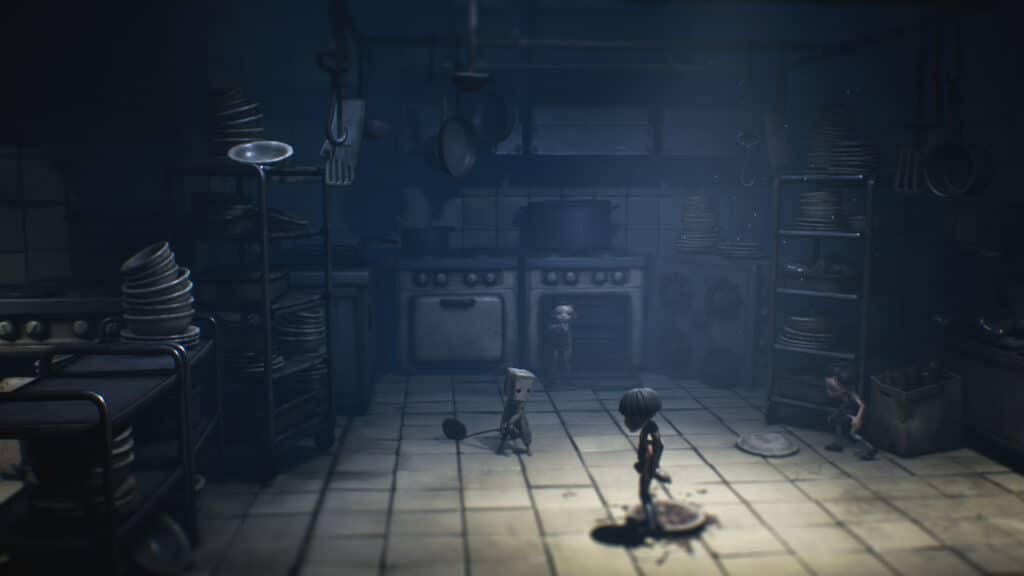
One part that really got me was in the school. I was sneaking through this hallway packed with traps, trying to stay out of sight while the Teacher patrolled. She could stretch her neck around corners, which already had me on edge. I heard a desk creak behind me, panicked, and ran straight into a noose. I knew it was there, but I still messed up. Took me a few tries to get through, but it felt good once I pulled it off.
Outside of the scary stuff, the game gives you room to explore and solve puzzles. It’s not too tricky, and watching Six can point you in the right direction. Sometimes she’ll just walk over to something or mess with a door. It’s a small detail, but it works. It makes it feel like you’re both figuring things out at the same time.
Most of the controls feel solid, but judging distance with the fixed camera can be rough. I missed a couple jumps just because I misread how far something was.
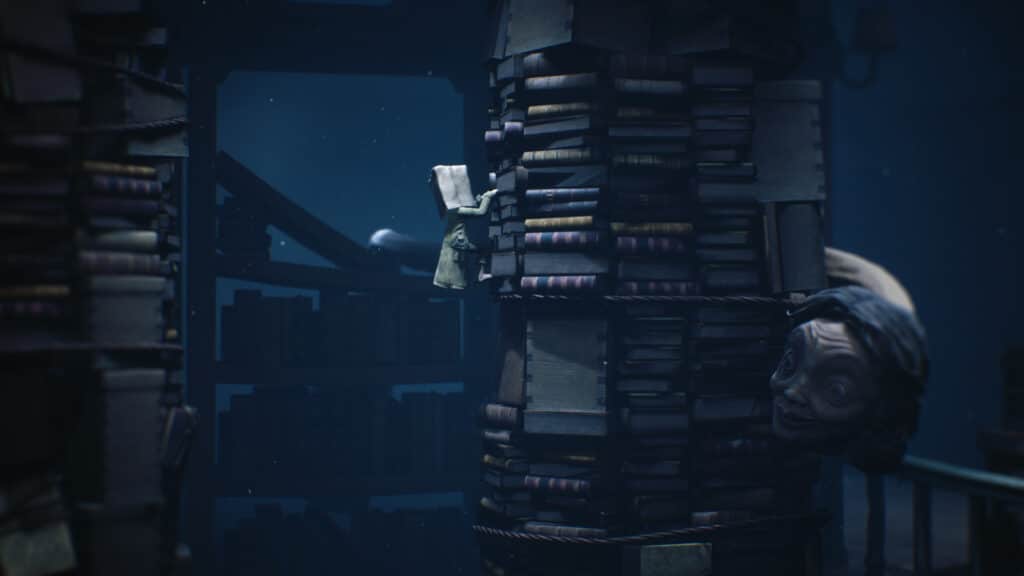
Distorted, Dark, and Loud in the Right Places
Little Nightmares II builds on the first game without going overboard. It doesn’t walk you through anything. You’re left to figure things out for yourself, whether that means solving a puzzle, avoiding something dangerous, or just trying to make sense of what’s going on. That quiet, hands-off style actually works better here than it does in most games.
The creature design is hard to forget. Each major enemy fits the setting, from the Hunter’s lumbering figure to the Teacher’s unnatural movements. Some of them blend into the background until it’s too late. Others fill the screen and make escape feel almost impossible. They don’t rely on jump scares. Instead, it’s the way they move, stare, or listen that gets under your skin.
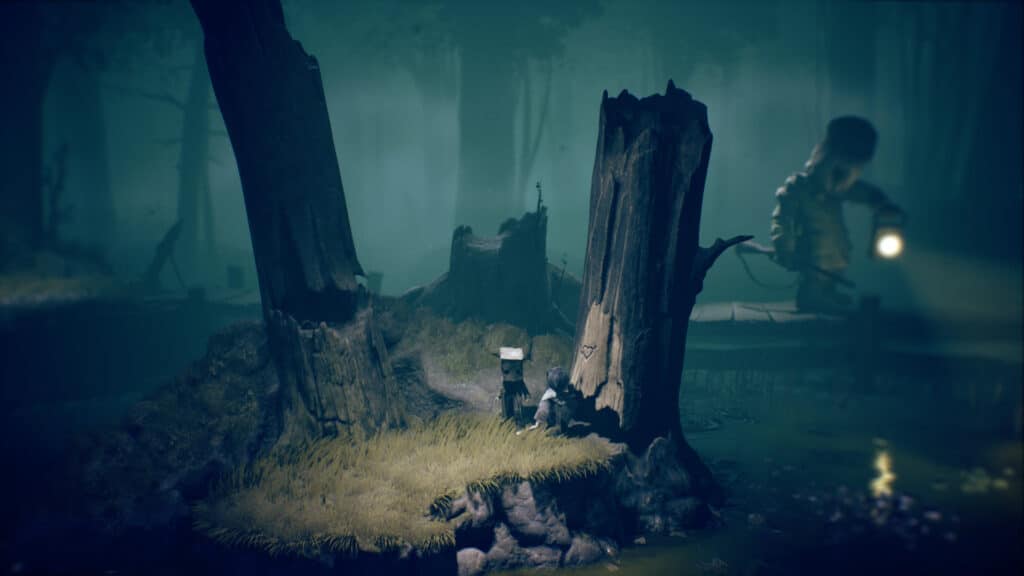
Lighting plays a big role in setting the mood. Rooms are often dark, but not pitch black. You can still see the outlines of furniture or passageways, which makes it worse when something starts moving in the corner. The game also knows when to pull back. Some chase sequences take place in wide-open spaces, which gives the action more room and makes the next quiet moment hit harder.
The sound design pulls its weight here. You get creaking floors, distant noises, and that low hum coming from the Signal Tower. Music stays quiet most of the time, but when it shows up, it doesn’t hold back. There’s one moment in the hospital where a screech hit so suddenly, I jumped even though nothing was happening on screen. I kept the volume up the whole time because I didn’t want to miss anything.
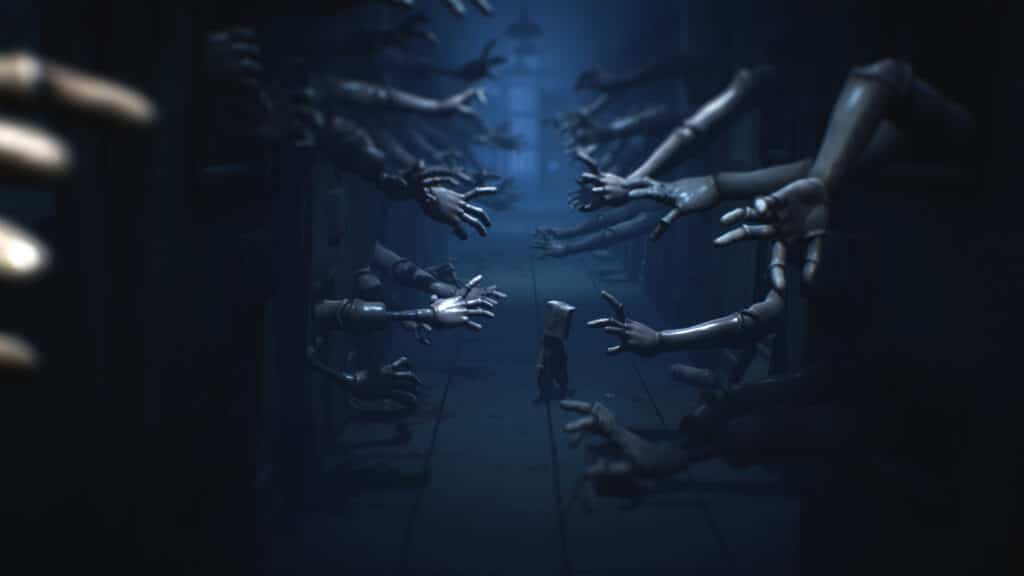
Little Nightmares II Says a Lot Without Saying Anything
Little Nightmares II takes what worked in the first game and adds just enough to make everything feel a bit more intense. It doesn’t spell anything out. You figure things out on your own, whether that’s solving a puzzle, dodging something that wants you gone, or trying to piece together what’s happening. That kind of quiet approach works better here than it usually does.
What got to me most was how much the game says without ever saying a word. Watching Six pause before helping me or wander off on her own made everything feel more alive. I didn’t think I’d end up caring this much about a character who never speaks, but by the time it ended, I really didn’t want to let her go.
It’s not a perfect experience. Some parts rely too much on trial and error. A few jumps can be hard to judge because of the camera. Combat feels slow and unforgiving. But those moments don’t drag the whole thing down. The rest is so tightly built and so well-paced that it’s easy to keep going.
If you finished the first game and wanted something bigger, stranger, and more unpredictable, this one delivers. It doesn’t just retread old ground. It adds just enough to feel new while keeping the slow build-up and strange atmosphere that defined the original.
Little Nightmares II

Summary
Little Nightmares II builds on the first game with new areas, clever design, and quiet storytelling that sticks with you. Some trial-and-error sections and awkward combat slow things down, but the rest holds up well. If you liked the original, there’s more here to dig into, with visuals and pacing that keep you on edge without overdoing it.
As always, remember to follow us on our social media platforms (e.g., Threads, X (Twitter), Bluesky, YouTube, and Facebook) to stay up-to-date with the latest news. This website contains affiliate links. We may receive a commission when you click on these links and make a purchase, at no extra cost to you. We are an independent site, and the opinions expressed here are our own.










